Chinese Phoenix
Phoenix (Feng Huang) is the King of the Birds in ancient legends. The male phoenix is called “Feng," and the female phoenix is called “Huang." Feng and Huang flying together symbolize harmony and auspiciousness. Like the Chinese dragon, the Chinese phoenix is an imaginary divine animal and an important totem of Chinese nationality. Since the Qin Dynasty, the dragon became the token for the emperor, and the phoenix became a sign of the empress.
What does a phoenix look like?
The image of the phoenix is complicated. It has a body of 2-3m with beautiful feathers, a soft and slim neck, a ridgy back,
 |
| Phoenix |
Origin of Phoenix
Phoenix roughly originated in the New Stone Age. Many bird patterns in the potteries from the primitive society are the
prototype of phoenix. In 1977, an Ivory Saucer was unearthed in Hemudu Cultural Site dating back to 7000 years ago. It has patterns of a pair of phoenixes spreading wings embracing the sun, reflecting the primitive ancestors’ worship of the phoenix and the sun. It was considered the earliest phoenix pattern in China until the discovery made in 1991 - A white stean with phoenix patterns dating back to 7400 years ago in Gaomiao Cultural Site. It’s 400 years earlier than the Hemudu phoenix. Therefore, the phoenix pattern on the white stean is the oldest of its kind. It’s a pattern of two flying phoenixes with crests, long beaks, long necks, and beautiful tails. What’s more interesting is that those two phoenixes are decorated with beast-face veins of tusk and protruding tongue, indicating that the phoenix was some divine animal at the time. Many other historical sites in much later times also have relics bearing the similar bird mark, further proving that ancient Chinese people worshiped the phoenix.Therefore, the phoenix is a deity animal that primitive people created to express their reverence and worship of the gods
and connect them with the spirits. Ancient Chu State (? - 223 .c) worshiped phoenix. It was a vassal state of the Zhou Dynasty (1027 - 256 .c) that settled in the middle and lower reaches of the Yangtze River. In its prime times, the territory included today’s Hunan, Hubei, south part of Henan, south part of Shandong, most Zhejiang, Jiangsu, Shanghai, Jiangxi, and partial Shaanxi. Among all the vassal states, Chu State was one of the biggest and most powerful. Chu people revered the phoenix and the sun. They often compared those two together to express their good wishes. Therefore, the images of phoenix can be found in many relics from the Chu State, including Phoenix Gimmal, Phoenix Drum with a Tiger Foundation, and Silk Clothes Embroidered with Phoenix, Dragon, and Tiger Patterns. Chu people also believed that the phoenix was the messenger to the gods and could convey orders, which would guide humans to become immortals.Story of Feng (Male Phoenix) and Huang (Female Phoenix)
It’s said that Feng and Huang were a happy couple in ancient times. They were together all the time. Feng had a melodious
voice, and Huang had beautiful feathers. Their daily life was to show their feathers and sing. Such kind of public display of affection was sometimes blessed by others but mostly envied, especially by the Jade Emperor and the Queen Mother of the West.Unfortunately, Huang died of illness, leaving Feng alone. He was devastated, his feathers were tarnishing, and his cry echoed in the sky. In a short time, Feng was ill too, which concerned the Queen Mother of the West very that she decided to bring Huang alive. However, Feng must bear extreme loneliness and face the most fervent burning, and he would turn to dust. If he still loves Huang devotedly, Huang shall be made alive. Feng promised to the Queen Mother of the West and went to a bleak place. When his last feather was about to shed, Feng made the last try to burn himself. In the raging flames, all the beautiful times with Huang came to Feng’s mind that kept Feng alive. Three days later, the fire was out, and out of a pile of dust, a red new Feng soared into the sky to meet Huang. They were reunited. This is the legend of Yu Huo Chong Sheng (Born of Fire).
How were phoenix and dragon a couple?
There are many idioms in Chinese culture regarding the dragon and phoenix being an auspicious couple, like the Long Feng Cheng Xiang (Dragon and Phoenix Bringing Prosperity) and Long Fei Feng Wu (like dragons flying and phoenixes
dancing -- lively and vigorous flourishes in calligraphy). However, there are also idioms of Feng and Huang having a conjugal bliss. For example, Feng Qiu Huang means that Feng is courting Huang. Feng Huang Yu Fei implies that Feng and Huang make a happy couple flying together. How were phoenix and dragon a couple when a male phoenix (Feng) and a female phoenix (Huang) were together?In ancient China, dragon and Feng were both the totems of the Chinese nationality. Since the Qin dynasty, the image of Feng became feminized. As the dragon had authoritative and majestic attributes, emperors began to use it as a symbol of monarchy. Qin Shi Huang first referred to himself as the dragon, and the later emperors just followed the example. In contrast, Feng was a kind of beautiful image that liked to befriend good-dressed women. Therefore, the empresses and the emperors’ concubines began to refer to themselves as Feng. Later, Feng was only used to represent the empress. After the Han dynasty, the dragon represented males, and Yang and Feng represented females and Yin. However, when Feng and Huang were put together, Feng was considered a male.
Phoenix Coronet
Dragon, as the exclusive symbol of the monarchy, was often embroidered on emperors’ clothes and palaces. While phoenix, being the symbol of the empress, was often used to decorate the coronet. A typical phoenix coronet must have jewels that are shaped like a phoenix. The phoenix coronet wearing began in the Qin dynasty. Later, it became more sophisticated and exquisite. Only on some critical occasions, such as the empresses being canonized, the phoenix coronet was allowed to wear. In the Ming and Qing dynasties, the phoenix coronet was not exclusive to the royals. Ordinary women were allowed to wear as well. However, as the phoenix coronet was too expensive and precious, women only wore it at their wedding.
 |
| Phoenix Coronet from the Ming Dynasty |
What are the implications of the phoenix image?
Phoenix is an auspicious bird in Chinese culture. It represents harmony, love, peace, and power. Ancient Chinese people believed that the phoenix would come in peaceful times. It’s a sign of auspiciousness. Meanwhile, the story of Feng and Huang moved Chinese people so much that the phoenix became a token of a happy marriage. Besides, the phoenix is a symbol of power. Since ancient times, the phoenix's image was inscribed on the jades and bronzes that represented authority. Later, the phoenix pattern became exclusive to the royal family.
Idioms about Phoenix
Wu Tong Qi Feng (phoenixes perch on sycamore tree): the sycamore tree is said to be the king of the trees that phoenixes like to perch, indicating that talented people only serve those who appreciate them.
Feng Qiu Huang (Feng courts Huang): a man and woman are in love, and the man is courting the woman.
Bai Niao Chao Feng (birds paying homage to the phoenix ): someone respectable enjoys popular confidence.
Feng Mao Lin Jiao (phoenix’s feather and dragon’s horn): scarce talents.
Feng Huang Lai Yi (a phoenix appears): an auspicious omen.
Bie He Gu Luan (parting crane and lonely phoenix): a parting couple.
Feng Huang Zai Nu (phoenix is kept in a cage): someone with talent is restrained.
Feng Ming Chao Yang (phoenix is singing under the morning sun): talented people are getting opportunities to display their abilities.
Long Yue Feng Ming (like a dragon is flying and a phoenix is singing): implies someone with outstanding talents.
Ling Zi Feng Chu (dragon’s son and phoenix’s baby): signals excellent young people.
Ya Chao Sheng Feng (a crow gives birth to a baby phoenix): implies a gifted person is born in a poor family.
Related Articles:
Chinese Dragon - Origin Connotations Types Decorations and Idioms
12 Interesting Facts on Chinese Wedding

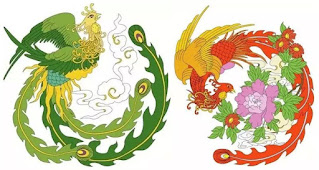
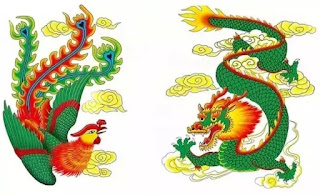
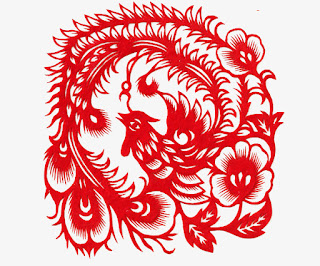


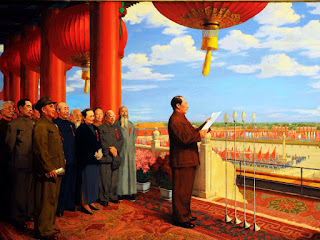
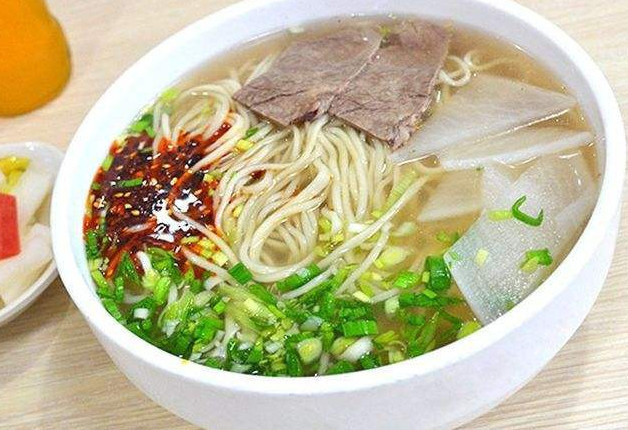
Comments
Post a Comment